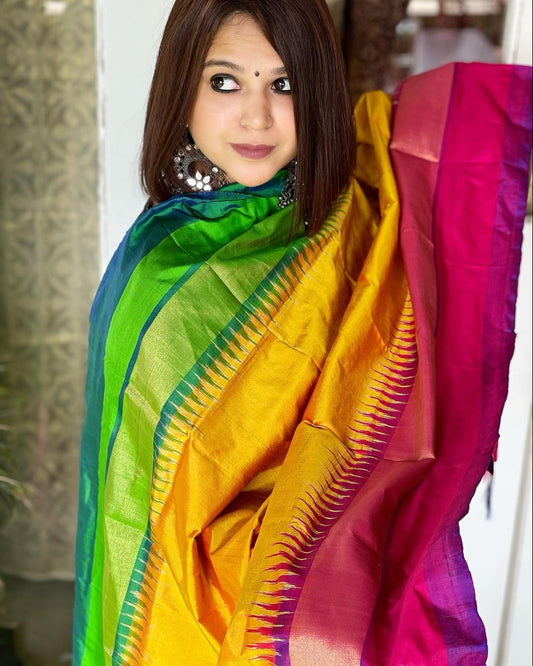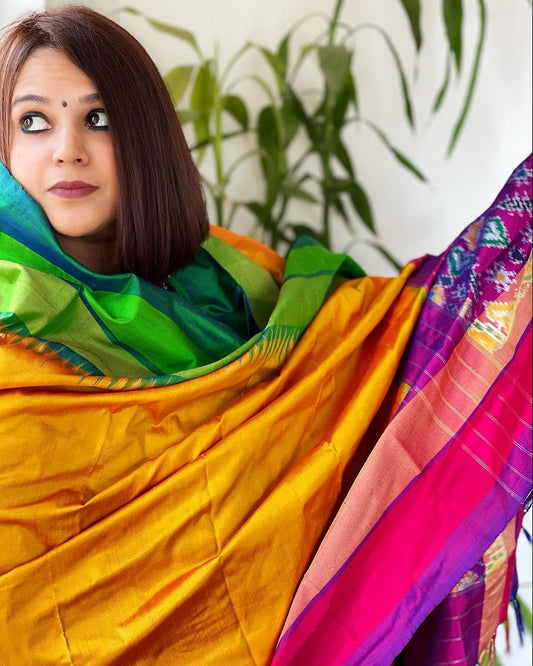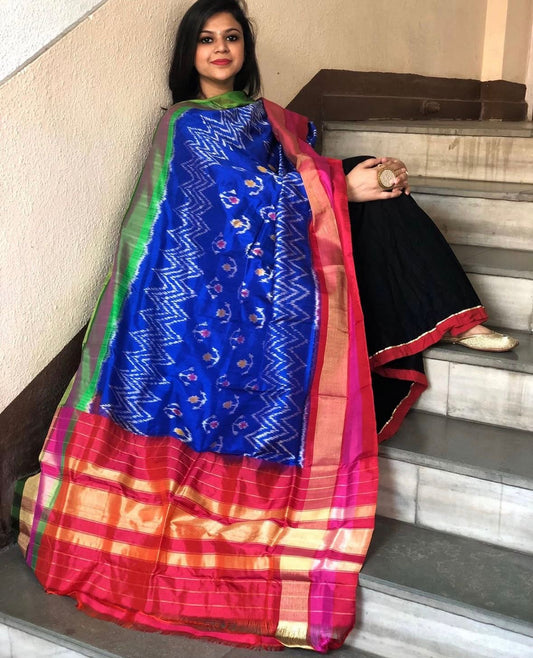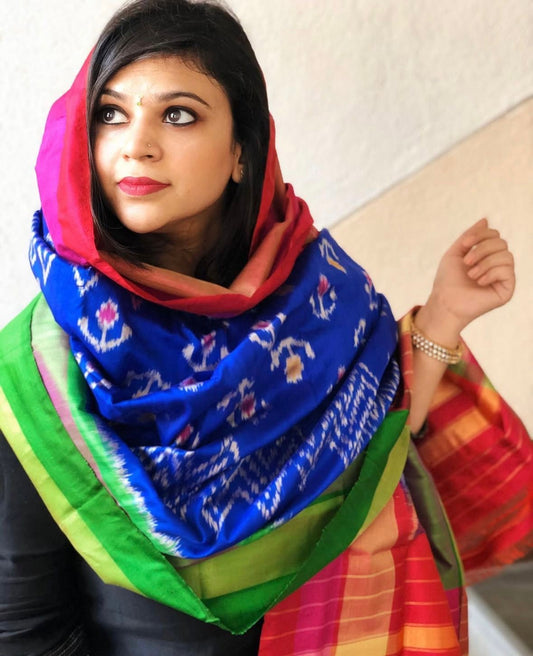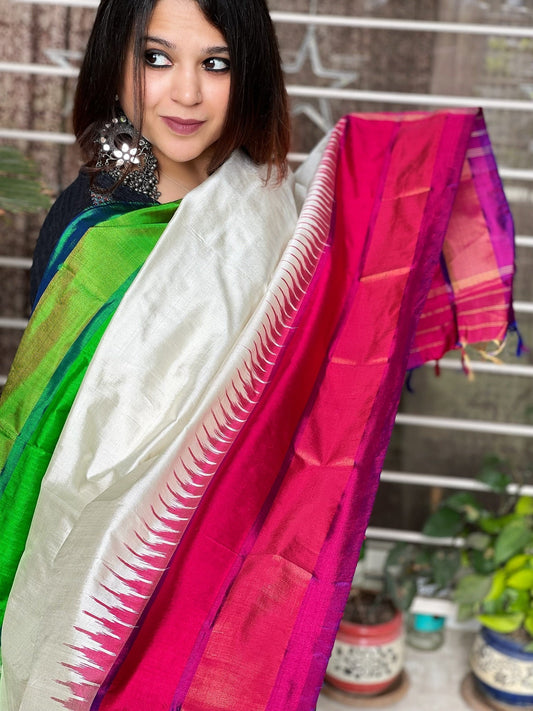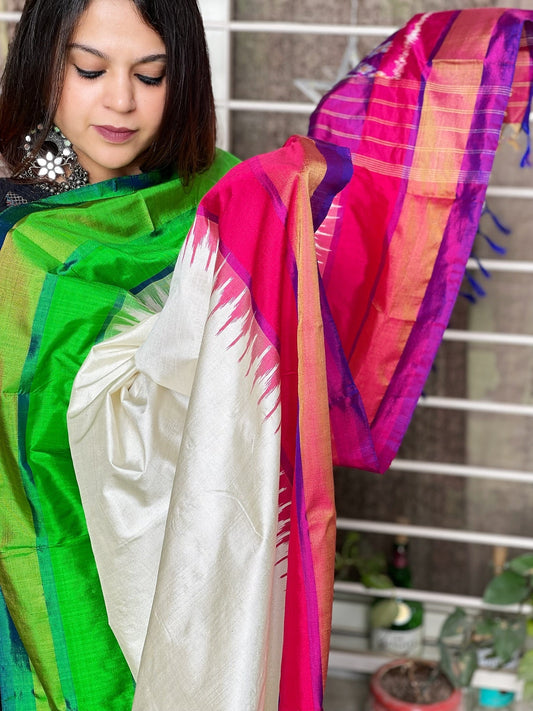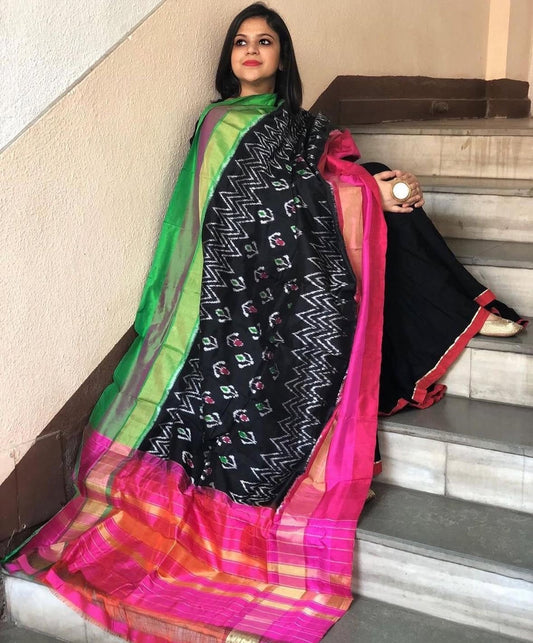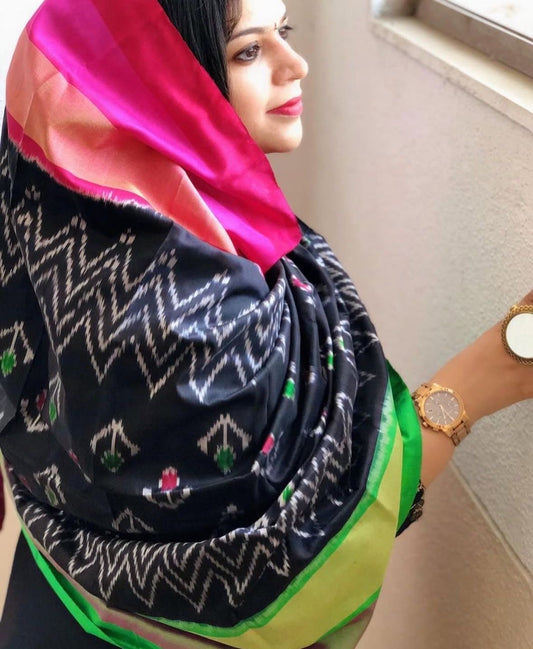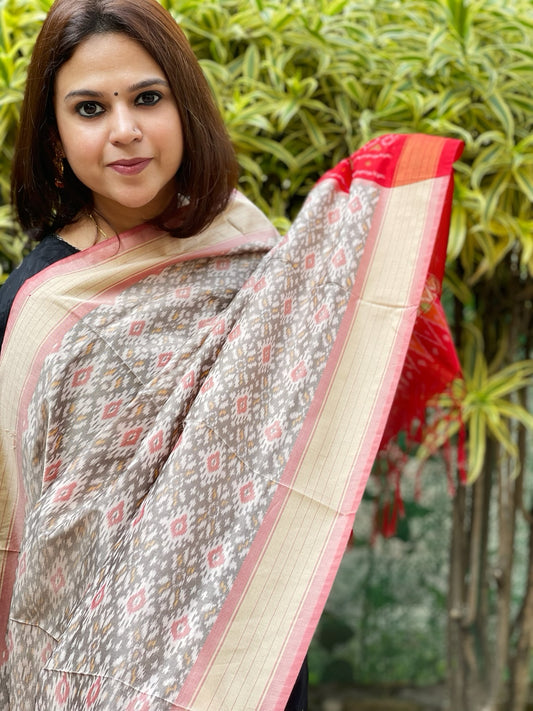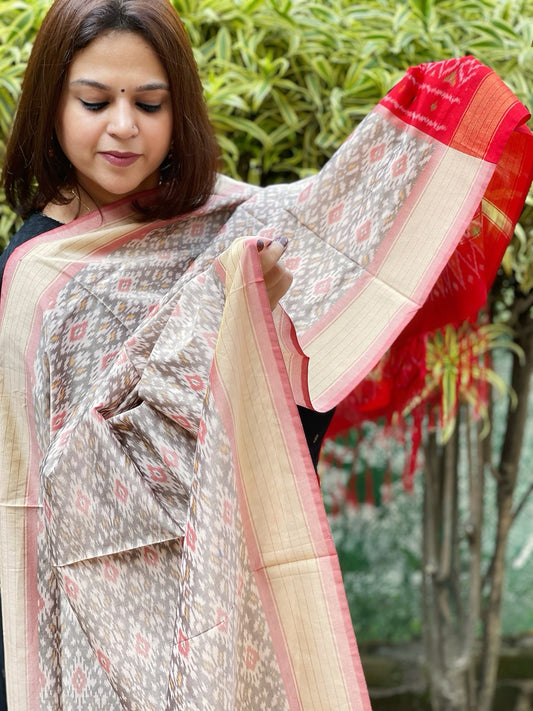Kantha stitch shawls are more than just beautiful pieces of fabric; they represent a living tradition that has its roots deep in the cultural soil of Bengal. With each needle stitch, artisans pass down tales from generation to generation, capturing stories within their threads.
Kantha's origins date back centuries and are intertwined with the lives of rural women who initially created this art from old, repurposed cloth. This transformation of everyday fabrics into intricate designs speaks to a resourcefulness and creativity that's deeply admired.
The beauty of a Kantha shawl lies not just in its colourful appearance but in the meaning behind its patterns. These patterns often tell stories, express emotions, or signify blessings and protection. Each stitch is a deliberate act of storytelling, with motifs such as flowers, birds, and even mythical creatures, bringing the fabric to life.
As you wrap yourself in a Kantha shawl, you're not just donning a piece of clothing; you're carrying a piece of history filled with care and tradition. It's a reminder of the legacy of the artisans who crafted it, weaving tales of their lives into something you can wear and cherish.
Origins of Kantha Stitch: A Cultural Tapestry
Kantha stitch, an emblem of Bengali heritage, weaves together threads of history and artistry. Its origins lie in the homes of rural Bengali women who sought to recycle old saris and dhotis into something new. This embroidery craft dates back thousands of years, flourishing in the regions of West Bengal and Bangladesh.
The word “Kantha” itself traces back to Sanskrit, meaning "rags," underscoring the practice’s beginnings in using scraps of fabric. Women would often gather with their families, sharing stories and experiences as they stitched these textiles. The creation of Kantha was a personal journey, often reflecting the thoughts or dreams of the creator.
Kantha stitch today serves as a symbol of the simplicity and innovation found in these communities. It embodies a cultural tapestry where every design, however simple, holds profound significance. The technique includes:
- Running Stitch: This basic style forms the foundation of Kantha, creating wave-like motifs.
- Patchwork Designs: Combining various fabric layers to tell a collective story.
- Motif Inspired: Designs often mirror rural life with imagery of animals, floral patterns, and daily objects.
Kantha is more than an embroidery style; it's a narrative sewn into fabric, reflecting the resilience and creativity of its people.
The Crafting Process: From Fabric to Masterpiece
The creation of a Kantha stitch shawl involves meticulous processes combined with unique artistry. Each piece begins its journey as several old sarees or cloth layers, cleaned and laid atop one another to form a quilt-like base.
The distinctiveness of Kantha lies in the transformation of these humble fabrics into vibrant works of art, all by the hands of skilled artisans.
The crafting steps include:
1. Preparing the Fabric: Artisans sort and clean layers of old fabric, usually cotton, preparing them for embroidery.
2. Creating the Design: The design phase involves no pre-drawn patterns. Rather, artisans use their intuition and creativity to outline their visions in simple, freeform stitches.
3. Stitching the Tale: Using a basic running stitch, creators add motifs depicting stories, nature, and everyday life—each piece becomes an expression of culture and storytelling.
4. Final Touches: Once stitched, the finished shawl may undergo a gentle washing to ensure longevity, with care taken to preserve the vibrant colours.
This labour-intensive process showcases the artisanal skill and cultural narratives behind each Kantha shawl. The result is a masterpiece, unique to the hands and imagination of its creator, capturing both simplicity and grandeur.
Through these careful processes, Kantha shawls do more than keep you warm; they envelop you in the rich history and vibrant stories that have evolved over centuries.
Decoding the Patterns: Stories and Symbolism
Kantha stitch patterns are rich with stories and symbols, each design whispering tales from the artisan's life or heritage. Unlike patterns that follow a strict guide, Kantha designs bloom from the artisan's imagination, drawn from memories, folklore, or everyday life.
Patterns often include:
- Nature Motifs: Flowers and trees are common, symbolising growth, beauty, and the continuous cycle of life. Lotus flowers may represent purity and hope.
- Animals and Birds: Elephants, peacocks, and fish feature prominently. Each has specific meanings, such as wisdom, beauty, or prosperity.
- Geometric Patterns: Lines and shapes like circles or spirals represent continuity and the universe, often used to convey a sense of endlessness.
- Human Figures: Sometimes, human forms like farmers or dancers appear, reflecting daily life and cultural festivities.
Each stitch within these motifs tells a part of a story, embodying messages, emotions, or cultural values. For instance, a shawl with fish motifs may express abundance and fertility, rooted in the artisan's experience.
By understanding these symbols, wearers can connect with the fabric on a deeper level, appreciating the rich heritage and storytelling Kantha artisans bring to life.
Caring for Your Kantha Stitch Shawl
Caring for a Kantha stitch shawl ensures it remains vibrant and long-lasting, preserving the artisan’s hard work for years. Proper care involves understanding the delicate nature of the fabric and the stitches. Here’s a straightforward guide to keep your shawl looking its best:
1. Gentle Washing: Preferably hand wash in cold water with mild detergent. Avoid twisting or wringing the fabric to prevent distorting the stitches.
2. Drying: Lay flat on a clean surface, away from direct sunlight, to dry. This helps maintain the shape and prevents colour fading.
3. Ironing: Use a low heat setting. Place a cloth between the iron and the shawl to avoid direct heat on the stitches.
4. Storage: Fold neatly and store in a cool, dry place. Protect it from pests by wrapping it in cotton fabric or using natural repellents like neem leaves.
5. Handling Stains: Tackle any stains immediately with spot cleaning. Gently dab the area with cold water and a touch of detergent.
By following these steps, you can enjoy the vibrant stories and beauty of your Kantha shawl for years. With a little care, the shawl not only stays a treasured part of your wardrobe but also continues to reflect the rich cultural tapestry of Bengal.
Conclusion
The art of Kantha stitch weaving is a majestic journey bound in fabric and thread—a truly captivating reflection of culture and tradition. Each stitch brings depth to a shawl, turning it from mere cloth into a storyteller's canvas.
As a wearer, the shawl does more than adorn; it connects you to generations of skilled artisans who have passed down their craft through the ages, filling each piece with tales of life, nature, and dreams.
At Masakalee, we embrace this heritage through our curated collections, offering you a chance to own a piece that embodies history and art, stitched into every thread. Whether worn as a statement or used as a comforting drape, each Kantha shawl invites you to explore the intricate beauty and heartfelt stories embedded in its fibres.
Explore our selection at Masakalee and discover the elegance and craftsmanship Kantha dupatta shawls have to offer. Each piece embodies a unique narrative, waiting to be shared and cherished.
Let these vibrant threads weave into your life, offering comfort and timeless style with stories to inspire you.



